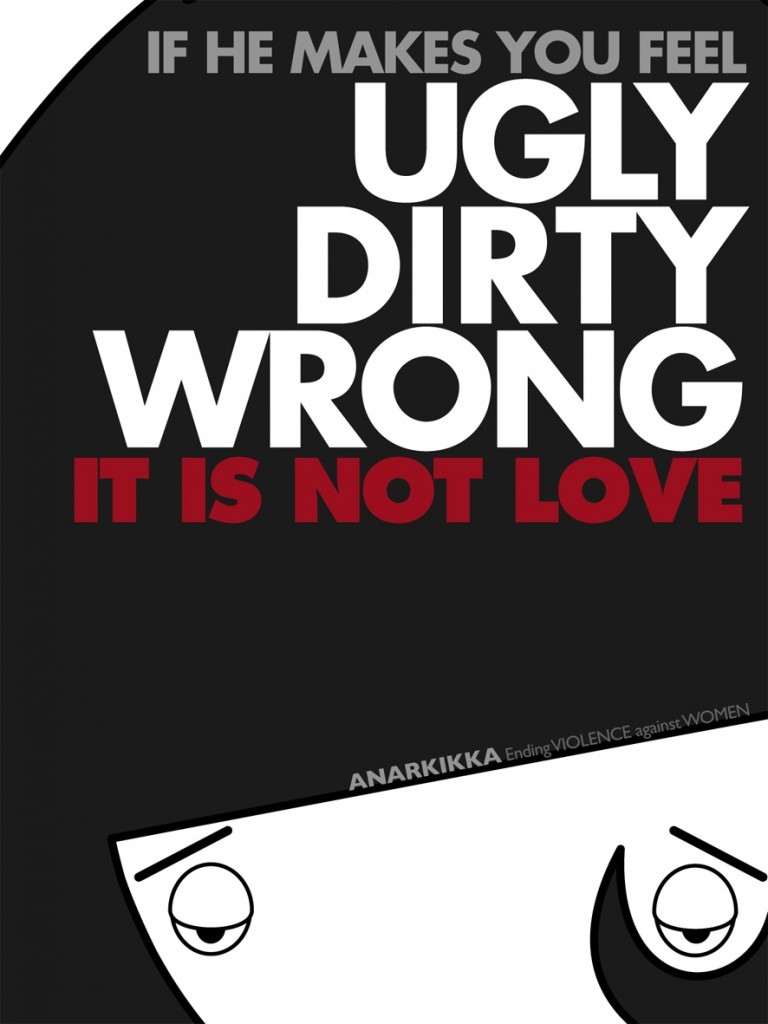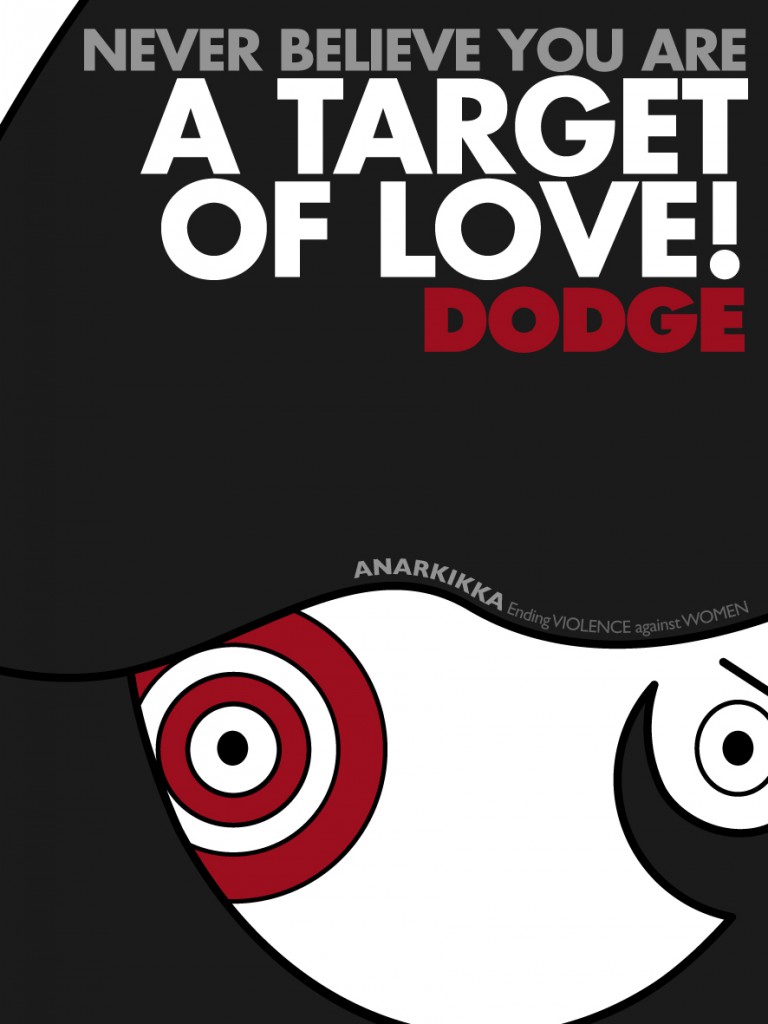The illustrations of Anarkikka for the Centro Donna Lilith
Jamila Campagna
Forty years ago, between the 30th of June and the 29th of July 1976, at the tribunal of Latina took place the trial for the so called Circeo Massacre, a murder of such brutal violence that hit Italy social and cultural imaginary of that time, getting with incredible lucidity till today, it keeps being the point of no return where the awareness against the genre violence started. Donatella Colasanti and Rosaria Lopez, the two young victims of the night of tortures (where the second one was murdered) led by three young men of the Roman bourgeoisie, became symbol of a society that had to change by facing the emerge of a latent violence, unfortunately not so marginal, by some men towards women and of a general sexist approach that used to see the woman in a subordinate condition in work or family contests and more generally in the social environment. In 1976 the feminist movement had already took its shape since several years and from that moment it was able to slowly develop also in Latina, a town with historical origins that made difficult to delineate a new point of view about womanhood. At the beginning, demonstrations after the Circeo murder had a political nature, they were a matter of class, there was a working class offended by a petty and brute bourgeoisie hided under a prig patina; lately the more active citizens realized the importance of those demonstrations and the need to interpret the event as a cultural phenomenon and not something delimited into an ideological politic made of opposite poles, but rather belonging to a civil and cultural kind of politic.
In this path has established the important work of Cento Donna Lilith of Latina, founded in 1986 by many of those women activist who demonstrated in occasion of the Circeo trial, a Center that has become with time a reference point for all the women who would need acceptance and support in situations of social, work or domestic violence. The last 29th of June, the Centro Donna Lilith inaugurated a month of mobilization to think about prevention and politics to contrast the genre violence. The first phase of the events has been the exhibition of the manifesto drawn by the illustrator Stefania Spanò, known as Anarkikka, that extends for 9 meters on the Centre façade and speaks from there to the to the town with large letters, reminding that Italian society has changed a lot in the last 30 years but some problems are present “now as then”. Through the combinations of two dimensional characters (almost always female figures) with synthetic and explicative sentences, Stefania Spanò – Anarkikka tells current events through women’s eyes; she makes some kind of cartoons that act like windows and create a trans-geographical and trans-cultural open speech. Her projects – with subjects that go from criticism about some judgement to the consideration of events and how the press interprets them, to mention some – rotate around the woman universe, the woman role in Italy today (with a glimpse to the foreign news) and refer a point of view which is internal and external at the same time: how women see themselves and how they’re seen; what women have to say and what the society says about women. A work made of difference and attention, not without irony. That’s why graphic is political. Because the illustration becomes a commitment which is political in a cultural, civil and civic meaning, according to the etymology that’s got its derivation from polis, the Greek town, which wasn’t only a mark on the map or an administrative border, but rather the ideal place for a respectful and aware coexistence between the members of a community, the moment of cohesion between the multiple, where, going deep inside the language meaning, the word polis shares the same root πολ- (pol-) of the Greek definition that describes the many (οϊ πολλοί).

The valorization of the genre differences, important source and possibility of enrichment, mixes today with the big challenge of the contemporary multiplicity, that finds its realization by acknowledging and respecting the singularities, not according to a principle of equality directed to level the single’s characteristics with those of the group, but according to a principle of equity that considers each one for their own identity, so the person doesn’t get stuck in a stereotype.
This is the range of thought that Anarkikka tells through her silhouettes with contours alternately angular and curvilinear, figurines telling their opinion with well thought out and assertive sentences, that have made their way also through the booklet Quando le donne dicono Basta, realized this year by the Centro Donna Lilith to document their thirty years work, where Anarkikka has curated the illustrations.
On completion of the mobilization month against the genre violence inaugurated with the manifesto Anarkikka, on 29th of July – anniversary of the Circeo murderers judgement -, the Centro Donna Lilith, in cooperation with the director and performer Monica Giovinazzi, has organized Colmare di colore, a travelling demonstration-performance open to the community, that will start from the Centre location (via Massimo D’Azeglio, 9, Latina) and will reach Latina Tribunal, stopping at some symbolic places with readings, actions and the installation of color cards, signs to create a non-violence culture and the respect for differences. At the end of the path will be shown the film Processo per stupro, documentary-film realized in 1979 by a group of film makers and dedicated to entirely document the trial of Fiorella’s rapists (also carried out in Latina in 1978): for the first time television cameras entered a tribunal room and a trial could reach Italians’ houses, starting a critical reflection about legal culture of the time and lately jurisprudential and legislative transformations besides the social ones.
Cover: © Anarkikka







